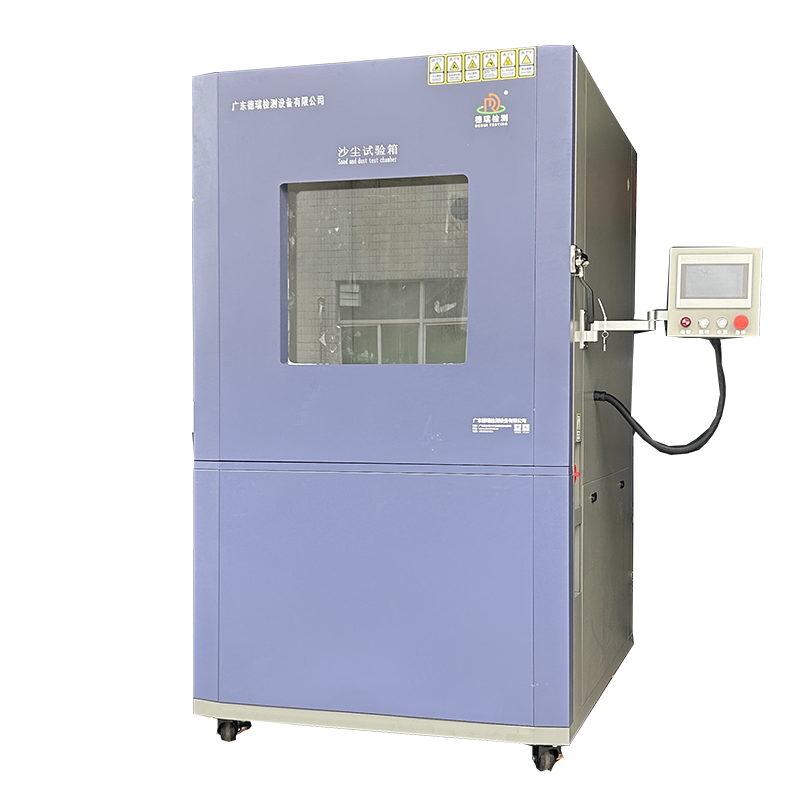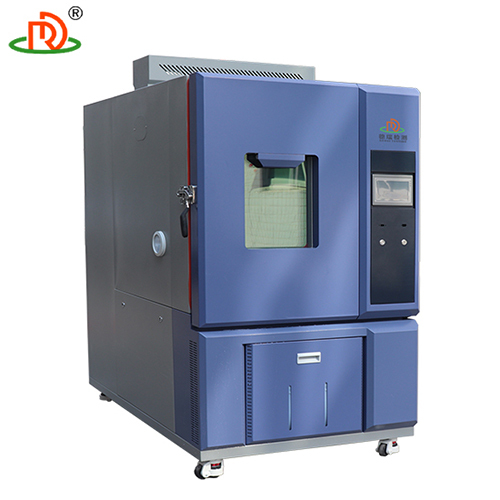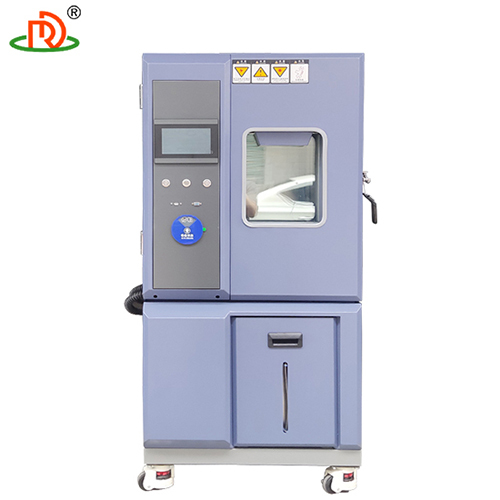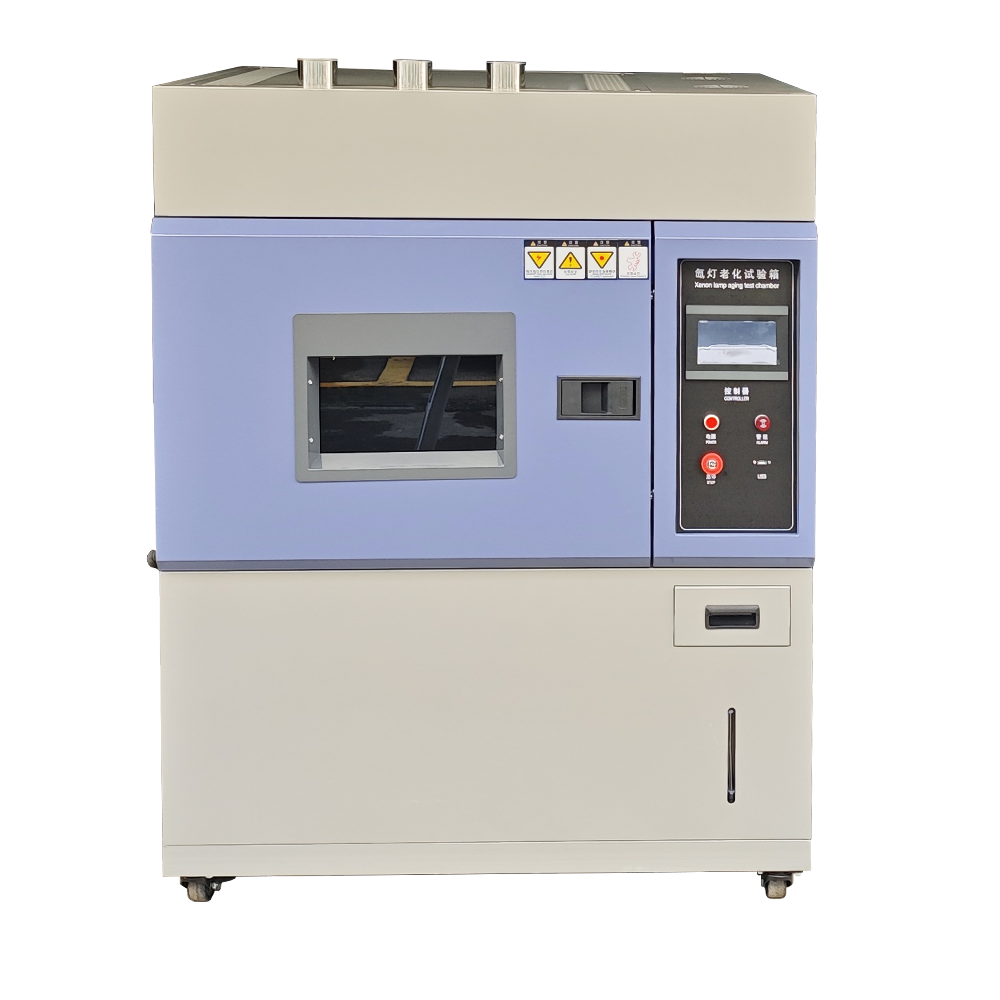Verify the protection level of the module under sandstorm environment (e.g. IP67/IP69K) to ensure no thermal runaway caused by dust intrusion.
Simulate the long-term erosion of industrial dust on outdoor cabinets to evaluate sealing and heat dissipation efficiency.
Test the explosion-proof performance of battery modules in coal mine dust environments (in accordance with IEC 60079-11).
Test the safety and range stability of UAV batteries flying in desert environment.
The test standards of the battery module sand and dust test system mainly include the following aspects:
1. International Standards
- IEC 60529: This standard specifies the enclosure protection level (IP code), including IP5X and IP6X dust test methods
The IP5X test allows for limited dust ingress, while the IP6X test requires complete dust protection.
- ISO 12103-1: This standard specifies environmental conditions and test methods for road vehicles, including specific requirements for sand and dust testing
MIL-STD-810G.
- MIL-STD-810G: US military standard covering environmental engineering considerations and laboratory test methods, including sand and dust testing
MIL-STD-810G: US military standard covering environmental engineering considerations and laboratory test methods, including sand and dust testing 2 6.
2. National standards
- GB/T 2423.37-2006: Chinese national standard that specifies the method of sand and dust test for environmental testing of electrical and electronic products.
GB 4208-2008: This standard is similar to IEC 60529.
- GB 4208-2008: This standard is similar to IEC 60529 and specifies the test methods for the enclosure protection level (IP code)
GB 10485-2007: This standard specifies the test method for dust protection.
- GB 10485-2007: This standard specifies the test methods for dust protection.
GB 10485-2007: This standard specifies the dustproof test method 1.
3. Industry standards
- SAE J2464: This standard applies to safety and abuse testing of charging and storage systems for electric and hybrid electric vehicles, including testing in a sand and dust environment.
UL 1642: This standard applies to the safety and abuse testing of lithium ion.
- UL 1642: This standard applies to the safety testing of lithium batteries and covers the requirements for environmental testing.
UL 1642: This standard applies to the safety testing of lithium batteries and covers environmental testing requirements 8.
- UN 38.3: United Nations Standard for the Transportation of Dangerous Goods contains requirements for testing batteries under various environmental conditions, including sand and dust.
UN 38.3: United Nations Standard for the Transportation of Dangerous Goods.
4. Other relevant standards
- ASTM D1735: Standard developed by the American Society for Testing and Materials (ASTM) covering specific methods and equipment for sand and dust testing, applicable to a wide range of materials and products.
IEC 62133: This standard covers specific methods and equipment for sand and dust testing.
- IEC 62133: This standard applies to the safety standard for secondary lithium-ion batteries for electric vehicles and covers tests such as temperature cycling and thermal abuse
GB/T 31467.1-201
- GB/T 31467.1-2015, GB/T 31467.2-2015, GB/T 31467.3-2015: These standards apply to the testing of lithium-ion power battery packs and systems for electric vehicles, covering high power applications, high energy applications and safety performance requirements
.
5. Overview of test procedures
1.Initial Test: Under standard environmental conditions, the battery module is subjected to initial tests on appearance, basic functions, and electrical performance.
2.Sample Placement: Place the battery module in the test chamber to ensure that it is in normal working condition.
3.Setting Parameters: Set the parameters such as dust concentration, airflow speed, temperature, humidity, test time, etc. according to the test standard or customer's requirement.
4.Start the test: Start the test chamber and begin the sand and dust test.
5.
Continuous monitoring: During the test, monitor the performance and status of the battery module regularly and record the relevant data.
6.End of test: After the test, take out the samples, carry out appearance and function check, and evaluate the test results.
6. Evaluation Criteria
- Appearance Inspection: Check whether there is any dust deposition on the surface of the battery module and whether there is any dust entry in the sealed part.
- Function test: Test whether the functions of the battery module are normal and whether it is affected by sand and dust.
- Sealing test: Evaluate the sealing performance of the battery module to ensure that dust will not enter the interior and affect its normal operation.
- Electrical performance: Test whether the electrical performance of the battery module is affected, such as voltage, current, internal resistance and so on.
- Safety performance: Test the safety performance of the battery module to ensure that no short circuit, overheating, explosion and other safety problems will occur in the sand and dust environment.
7. Precautions
- Safe Operation: Operators should wear protective equipment, such as dust masks and protective glasses.
- Equipment Maintenance: Regularly check and maintain the equipment to ensure its normal operation, especially the sand dust generator and airflow control system.
- Dust Recycling: Recycle dust after use to avoid environmental pollution.
- Temperature and humidity control: Ensure the uniformity of temperature and humidity in the test chamber to avoid localized overheating or overhumidity.
- Environmental control: Keep the test environment clean to avoid external dust affecting the test results.










 English
English Spanish
Spanish French
French German
German Italian
Italian Chinese (Simplified)
Chinese (Simplified) Japanese
Japanese Korean
Korean Arabic
Arabic Portuguese
Portuguese